Giuseppe Tartini: 30 Sonate Piccole for Solo Violin, Volume Three: Sonatas Nos. 13-18
In the last years of his life, the great composer, violinist and swordsman Giuseppe Tartini (1692–1770) laboured at a cycle of sonatas for solo violin. The resulting manuscript offers the most important composition for solo violin after Bach and, at six hours in duration, the largest integrated work for the instrument. This first complete recording is based on a fresh study of the source and includes a number of works in Tartini’s shorthand, overlooked in earlier editions.
Peter Sheppard Skærved
Listen To This Recording:
- Sonata No. 13 in B minor: I Andante
- Sonata No. 13 in B minor: II Allegro assai
- Sonata No. 13 in B minor: III Giga, allegro affetuoso
- Sonata No. 14 in G major: I Andante cantabile
- Sonata No. 14 in G major: II Allegro assai
- Sonata No. 14 in G major: III Allegro
- Sonata No. 14 in G major: IV Aria del Tasso
- Sonata No. 14 in G major: V Allegro
- Sonata No. 14 in G major: VI Allegro arpeggio
- Sonata No. 15 in C major: I Andante cantabile
- Sonata No. 15 in C major: II Allegro
- Sonata No. 15 in C major: III Giga
- Sonata No. 15 in C major: IV Menuet
- Sonata No. 15 in C major: V Allegro
- Sonata No. 16 in D major: I Andante cantabile
- Sonata No. 16 in D major: II Allegro assai
- Sonata No. 16 in D major: III Tasso
- Sonata No. 16 in D major: IV Furlana
- Sonata No. 17 in C major: I Andante cantabile amatissimo
- Sonata No. 17 in C major: II Allegro battute sciolte
- Sonata No. 17 in C major: III Allegro assai
- Sonata No. 17 in C major: IV Gravi (per Solfaut)
- Sonata No. 17 in C major: V Giga
- Sonata No. 18 in D major: I Andante cantabile
- Sonata No. 18 in D major: II Allegro assai
- Sonata No. 18 in D major: III Siciliana, andante
- Sonata No. 18 in D major: IV Menuets (1 & 2)
- Sonata No. 18 in D major: V Aria – Allegro assai
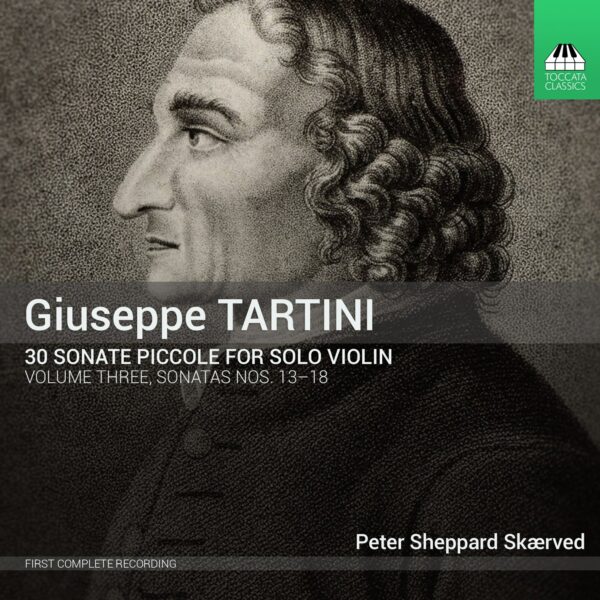
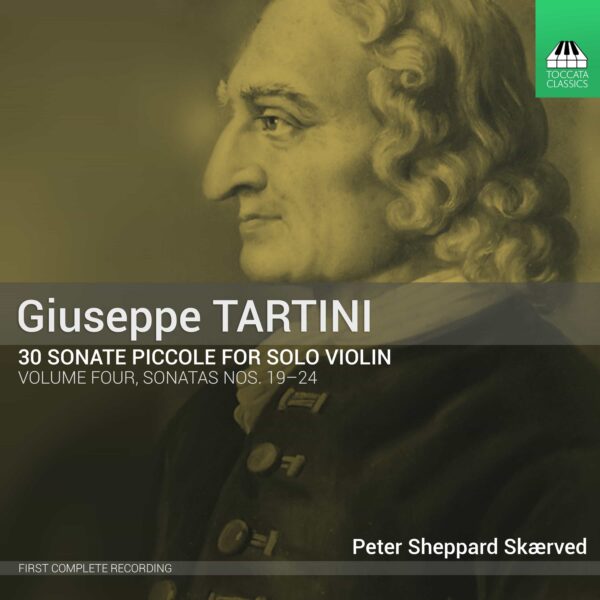
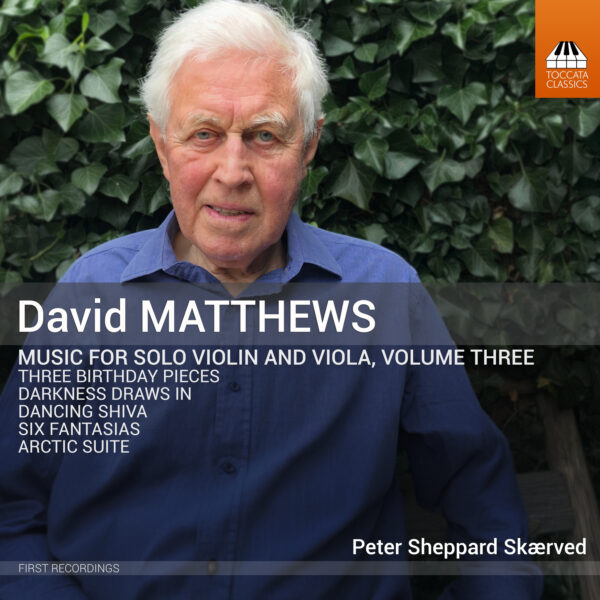
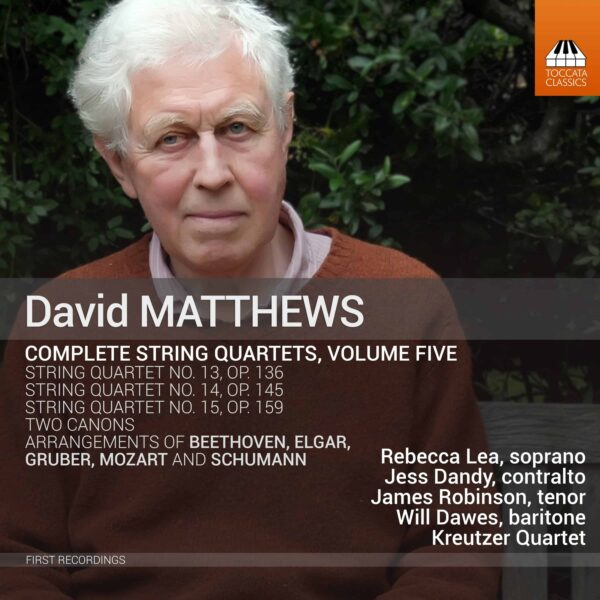
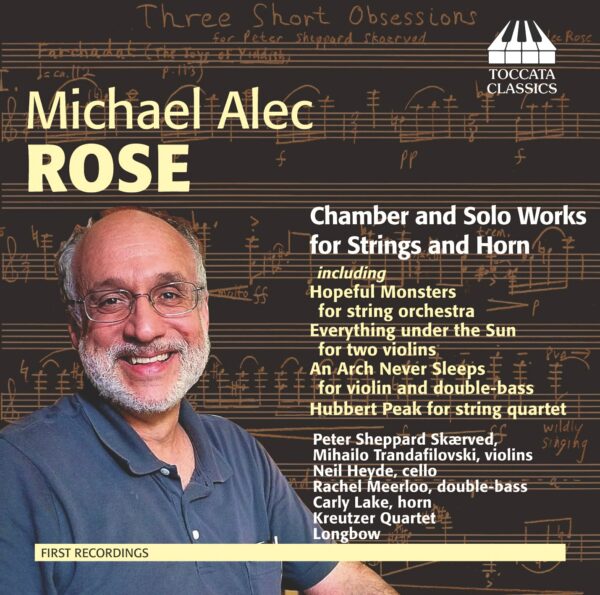
MusicWeb International :
‘… One notices, as before, that he has favoured a close-up recording in the church acoustic, wanting to negate any idea of a billowing sound. Instead there’s a blood-and-guts sound quality, a grainy and sometimes abrasive immediacy that certainly reflects those preferences admirably. That sound quality also serves to make more immediate Tartini’s amazingly forward-looking writing. […]
To each of these six [sonatas] Skærved brings his practised and long immersion in Tartini’s rhetoric and musical means to bear. He has had the advantage of performing and musing on these sonatas for many years and this familiarity is audible as he works through the twists and harmonic turns embedded in the music. To the fanfares of the Sonata in B minor he brings a tart elegance. […]
Where Tartini is spare and allusive harmonically Skærved responds with appropriate reserve. If one hears curious prefiguring of Paganini, as I do in the Andante cantabile of No.15 in C major, then that’s surely a tribute to Tartini’s technical and compositional thinking; so too those sometimes bizarre uses of silence to which he is prone. The quotations from popular songs admit wider influences, as do the instrumental imitations, such as the hurdy-gurdy hints in No.17, hunting motifs, and the use of birdsong. …
Above all he honours Tartini’s experimental harmonies, his dissonances, and his radical approach in these works. There’s something indeed almost Levantine about one of the movements from No.17 and in its nasal otherness Skærved preserves what must have been a startling sound for Tartini’s contemporary audiences. It’s still pretty startling today and for that the performer must take great credit.’
—Jonathan Woolf, MusicWeb International
Fanfare Magazine :
‘… Now the third presents the 13th through the 18th. It shares the earlier volumes’ aesthetic presuppositions, manifested in very close miking, which Skaerved expects will allow the overtones produced by the violin (and the “Tartini” or “under” tones) to strike listeners’ ears as forcefully as they do those of the violinist himself—and as forcefully as they may have presented themselves to Tartini as he composed the sonatas. … The 13th Sonata contains as its slow movement an Allegro assai in which Skaerved strikes sparks from the composer’s flinty double-stops. … The 14th Sonata, comprises six movements… Skaerved imparts to the first of these, by means of a sort of rough-hewn bow stroke, a rustic ruggedness; transforms the second into a plaintive lament; and answers the stentorian double-stopped asseverations with brief melodic fragments. Skaerved includes some electrifying octaves in the course of these statements. The finale rivals or even surpasses Pietro Locatelli’s “Harmonic Labyrinth” in its virtuosic effect, at least as realized by Skaerved. With its variety in tone and technique, this sonata should appeal nearly universally…
The four-movement 16th Sonata returns to a reverberant key—this time, D Major. Skaerved plays the first movement introspectively and allows the double stops of the second to ring; as in the fourth movement of the 14th Sonata, he pays in this third movement a deeply felt tribute to Tasso, whose poetry inspired so much of Tartini’s output. A commanding Forlana brings the sonata to a close…
Those who enjoyed the first volumes of the set should certainly enjoy this one as well’
—Robert Maxham, Fanfare Magazine, January/February 2016